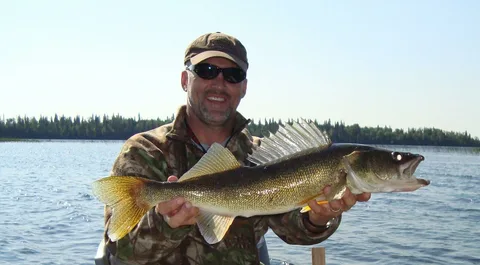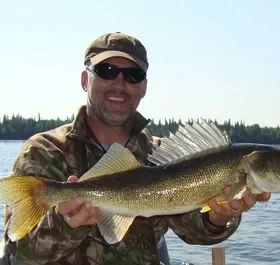How to Catch More Walleye with the Right Rod

A lot of people think that they can catch a walleye easily. However, getting this fish is tough, which you can quickly learn once you try it. You need good equipment, to learn how to locate walleye, and to experiment with some fishing techniques. Once you go through the hardship of getting a walleye, you will see how rewarding it can be.
Choose the Best Line
Whether you are fishing with a budget walleye rod or have one of the best models on the market, you need to choose the right line for this task. There are various materials for fishing lines that offer different properties.
For walleye fishermen, monofilament lines are usually recommended. They can stretch a lot and allow for high sensitivity. The recommended line diameter is 0.008-0.012 inches. Although that’s the most universal choice, always be sure that you adjust your fishing gear to your personal needs.
Take a look at the fishing conditions you’re dealing with. If you’re in clear water or going after tricky, highly pressured fish, lighter lines are the way to go. They’re less likely to spook those wary walleye. But hey, if you’re fishing in areas with heavy cover or lots of snags, you might want to bump up the line weight a bit.
Pick the Right Bait
Using live bait is the basic way to catch a walleye. Although you can experiment with artificial lures, live baits are not only a cheaper option but usually the most effective. Walleye are generally more complicated to catch compared to other freshwater fish.
Because of that, especially if you are a beginner, you want to make a safe bet with the live bait to significantly increase your chances of coming back home with the fish you are targeting.
The time of year and prevailing conditions can influence walleye behavior and feeding patterns. For example, during the spring and fall, when walleye are actively feeding, using minnows or jerkbaits can be effective. In summer or winter, when they may be less active, slow presentations with jigs or live bait might work better.
Learn More About Locating Walleye
One of the most difficult things while fishing for walleye is locating them. They usually spend their time below 10 feet of depth, so it’s good to learn more about what is happening under the water. Walleye like inflowing rivers and lakes.
You can also find them in rock points and sand bars – they are places where walleye move from deeper waters to shallower areas. As much smaller fish like sand and mud flats, you can find walleye there, as they feed on them. The same rule applies to thick vegetation and other structures.
Get your hands on maps, fishing reports, and tap into the local knowledge. These are treasure troves of info about the lake, river, or reservoir you’re fishing in. Look for those sweet spots where walleye hang out, like points, drop-offs, weed beds, and rocky areas. Don’t forget to scope out the water’s depth, clarity, and temperature.
Experiment with Fishing Techniques
As walleye is not easy to catch, you probably need to experiment with a few techniques and see which one works best. Keep in mind that a technique that worked yesterday might leave you empty-handed today, so be sure to change them up and see what the fish responds to.
One of the techniques you can try is jigging, where you place the bait near the bottom and then lift and drop it to perform bait movement. It’s usually most effective when fishing in spring.
Drifting live bait can help you catch sleepy walleyes in early spring and when weather conditions are not great in late spring and early summer. Float drifting can be most effective at dusk and dawn in summer when fish are more likely to feed. If you are looking for one technique that will work all year long, try drifting a slip bobber.
Master the Art of Sensing Bites
Mastering the art of sensing bites is a crucial skill when targeting walleye. These elusive fish are known for their subtle and delicate bites, making it essential to develop a keen sense of feel. When walleye fishing, it’s important to stay alert and fully engaged. Keep your eyes on the line and your rod tip, ready to detect any subtle movements.
Summary
As catching walleye is not the easiest task, you may feel frustrated. After you have the right rod and line and choose live bait, you might still encounter some slow days. Even when you master all the fishing techniques, you can still wait long hours until you finally catch walleye. Be extra patient with the process and try to enjoy it. Catching a walleye is very rewarding, but so is the whole process! For more information and resources on catching walleye, check out Findyourfish.












